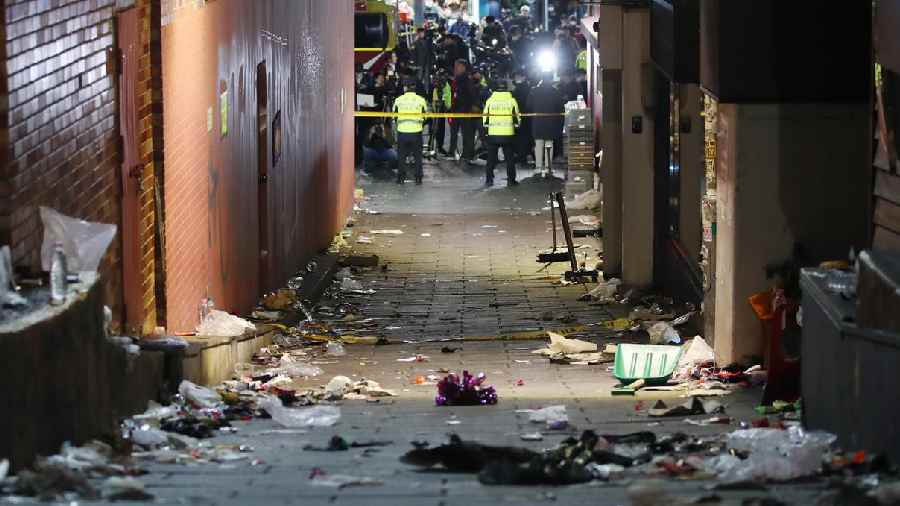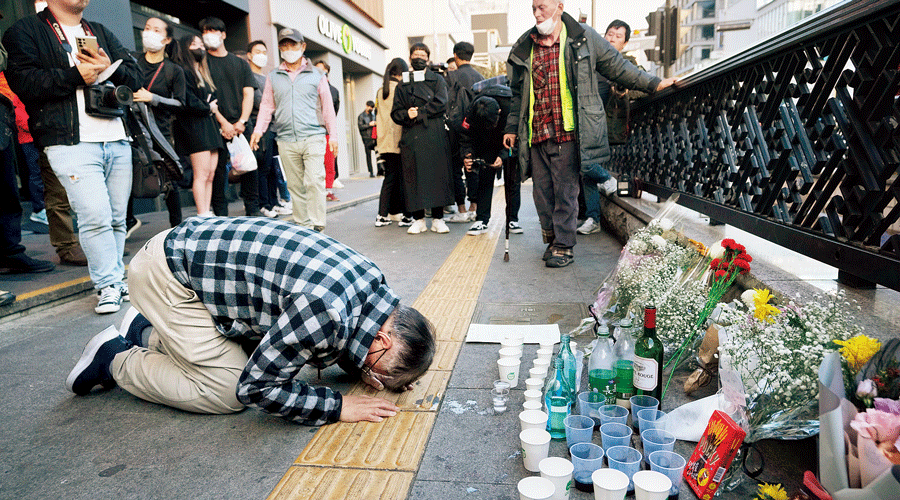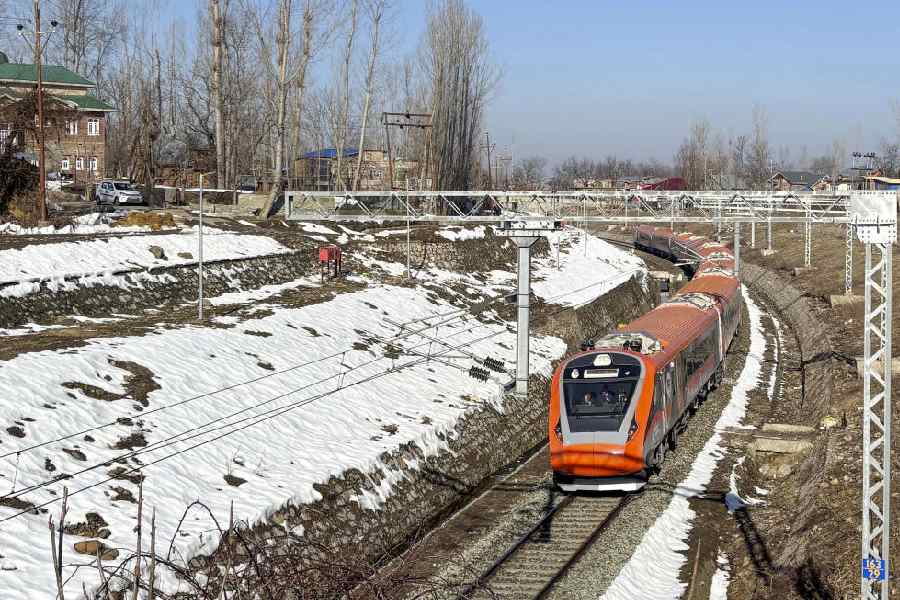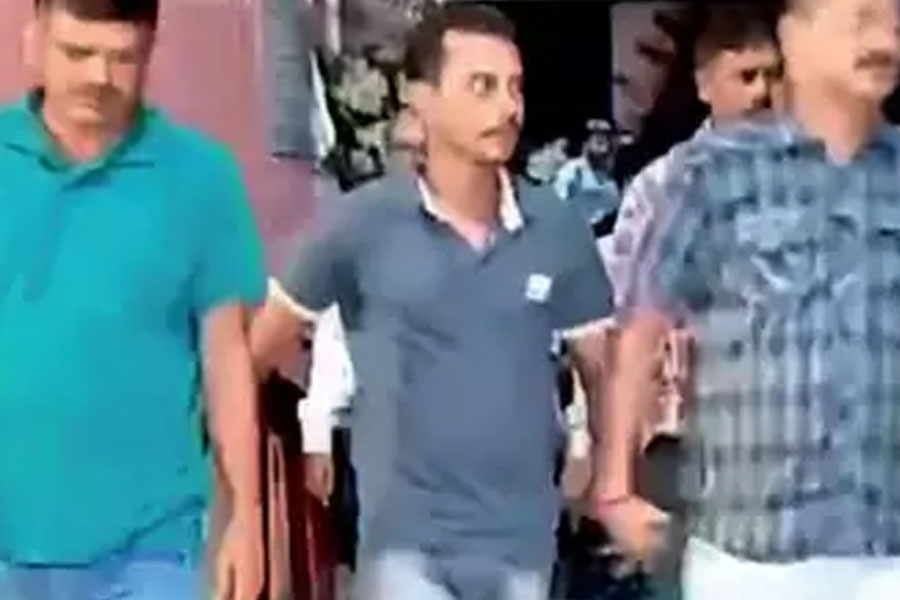Reading the news about a stampede, such as one in South Korea, where 150 people died and 80 more were injured over the Halloween weekend, you may wonder: How does something like that happen? What was going through the minds of the people in the crowd? How should you react if you find yourself in a similar situation?
Officials have said little about any specific factors that caused the crush on October 29, 2022. But crowd control experts have shared insights from studies on past stampede events.
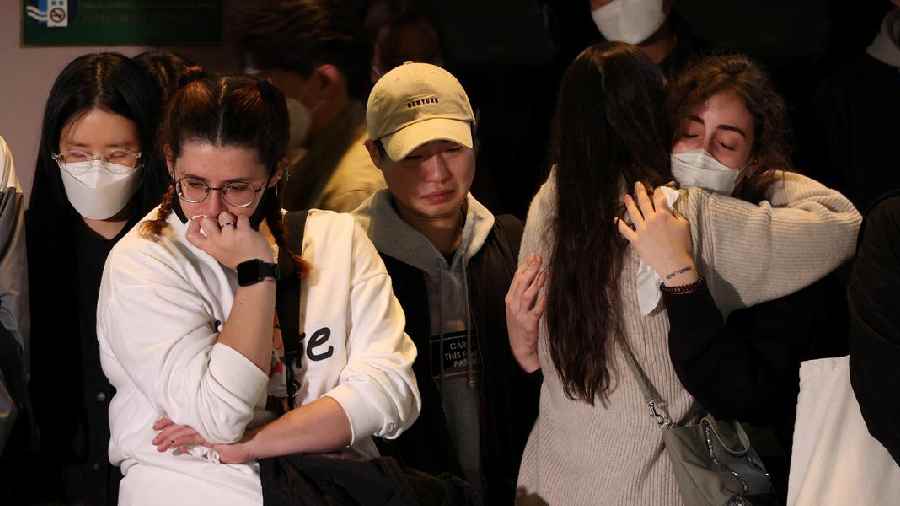
Bystanders of a crush event often say they didn't understand a stampede event was happening until it was right before their eyes, researchers say
Probably not mass panic
The situation could have some parallels with the 2010 Love Parade stampede, an overcrowding tragedy that occurred over a decade ago in Germany, said Anna Sieben, an associate professor of cultural and social psychology at the University of St. Gallen in Switzerland, who has been researching crowd dynamics for years.
Research that Sieben has conducted on the overcrowding event at the festival, which killed 21 people and injured over 600 more, shows that what happened there — and probably in South Korea — likely wasn't as a result of "mass panic," although that's what one might assume after reading about the situation.
Rather, said Sieben, people who find themselves in a stampede event often don't realize anything is wrong until it's too late.
Dirk Helbing, a professor of computational social science at ETH Zurich in Switzerland, agreed.
"A widespread view of crowd disasters is that they result from panic," Helbing said. "That is considered to be a state of mind determined by anxiety and fear, which would come with an increased level of adrenaline. As a consequence, the flight and fight instinct might be activated. That would cause people to run away in panic relentlessly, perhaps even trampling other people that are in their way. While such a thing can happen, most crowd disasters are not of this kind."
Helbing said that rather than a psychological state of mind, physical forces are more likely to cause stampede tragedies due to a phenomenon called "crowd turbulence."
What is crowd turbulence?
Helbing said that crowd turbulence happens when many people move into a space, where there is little room to move and a high density of people, and where people are squeezed in between each other.
This can cause what Helbing calls a "transmission of forces" between bodies.
"Those forces add up and push people around in unpredictable ways, sometimes over distances of several meters. In such conditions, it is very difficult to keep balance and stay on one's feet," said Heling.
Eventually, someone may stumble and fall, which creates a hole in the crowd. When a hole emerges, people directly next to the person who fell lack a counterforce to keep them from falling down in response to the pushing.
This can make them fall, too, Helbing said, potentially causing a "deadly domino effect."
"Given the weight of others on top, it is then difficult to breathe. Hence, many people may die of asphyxia, as it was observed in Seoul and before in many other places," he said.
But how does it ever get that bad in a crowd?
Sieben said there are three important components that can contribute to an out-of-control stampede situation in a crowd.
The first is somewhat obvious but deserves recognition, said Sieben: It's too crowded. This kind of overcrowding can occur in response to poor event organization or miscalculation of the number of people in attendance.
Next, said Sieben, stampede events can happen when all or most of the people who make up an already dense crowd want to get somewhere at the same time.
This can happen in emergency situations — when there is a fire, for example, and everyone is pushing to a safe exit — but it doesn't necessarily have to be anything that dramatic, she said.
"It can just be a minor impulse people have," Sieben said, like everyone wanting to get into the same bar at the same time.
It's currently still unclear what was attracting the crowd to the alleyway in South Korea.
Information moves slow in a crowd
The third factor that can be observed in overcrowding situations is the slow travel of information, Sieben said — people in the back don't realize what is going on in the front.
Unlike what one might assume when they hear about a stampede situation, people who are part of it may not even know what's happening until they are directly confronted with people lying on the ground.
"The mass panic idea implies that people all receive information very quickly and then act in the same way, which would imply that there's information being transmitted through the crowd," said Sieben. "But I think, on the contrary, a crowd is, in a way, very silent and doesn't transport information well."
Sieben said that if you think about your own experiences in crowds, this should make sense. Crowds are generally very noisy and people often can't see beyond the backs of the people in front of them. Ever had that experience?
"You have people in the front who cannot go anywhere because it's blocked, and they are pushed against the wall or piling up — something super dangerous — but people in the back, like two or three meters [6.6 to 9.8 feet] away, don't even realize," she said.
People in the back might think that the pushing they are feeling is normal and might even push a little themselves. But many people pushing a little bit at the same time can create a dynamic that is very dangerous further in the front, said Sieben.
"None of these people want to hurt anyone, I mean, they're there to party," she said. "And I think they're also not panicking, not until maybe the moment they are in a life threatening situation themselves."
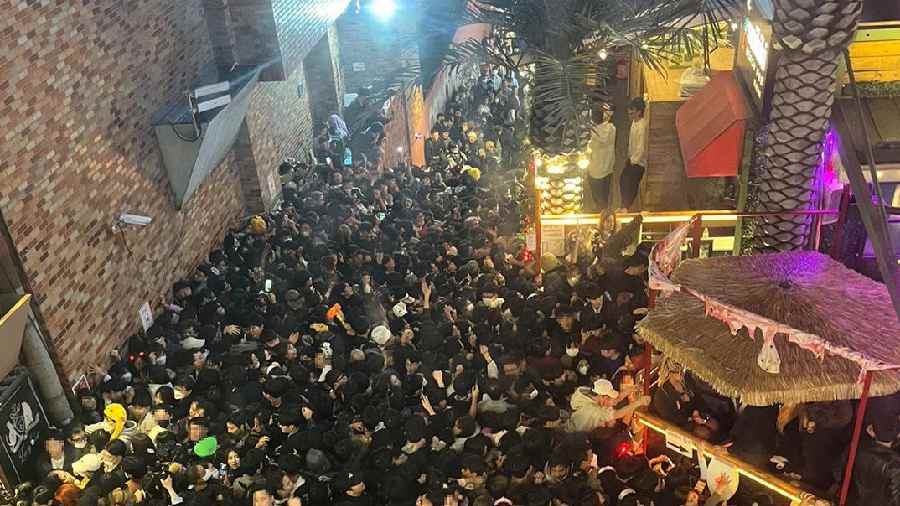
A street in South Korea's popular Itaewon district before a stampede over the Halloween weekend in October 2022
What if I find myself in a similar situation?
Stampede events are rare, and as Sieben said, it's often difficult to understand you are part of one until it's too late. However, she said, there's one sign that could potentially predict the start of a stampede event or the potential for one: Uncontrollable swaying in all directions.
This can be a sign of high pressure in the crowd, said Sieben.
If you find yourself in a situation of this nature, or confronted by what you feel is the start of a crush event, Sieben said it's important to make yourself heard and try to find a safe way out.
Sometimes people will stay silent in crush situations until it's too late because they don't want to cause a mass panic by yelling for help, she said, but being loud early could help information about the crush transmit faster throughout the crowd.
"Everyone's focusing in the same direction, and sometimes — not always — they might not realize that there is a way out, or a less crowded situation in the back or at the sides of the crowd," Sieben said.
Even when exits are available, people often don't think to look for them because they have become hyper-fixated on moving forward.
From Deutsche Welle newsfeed

